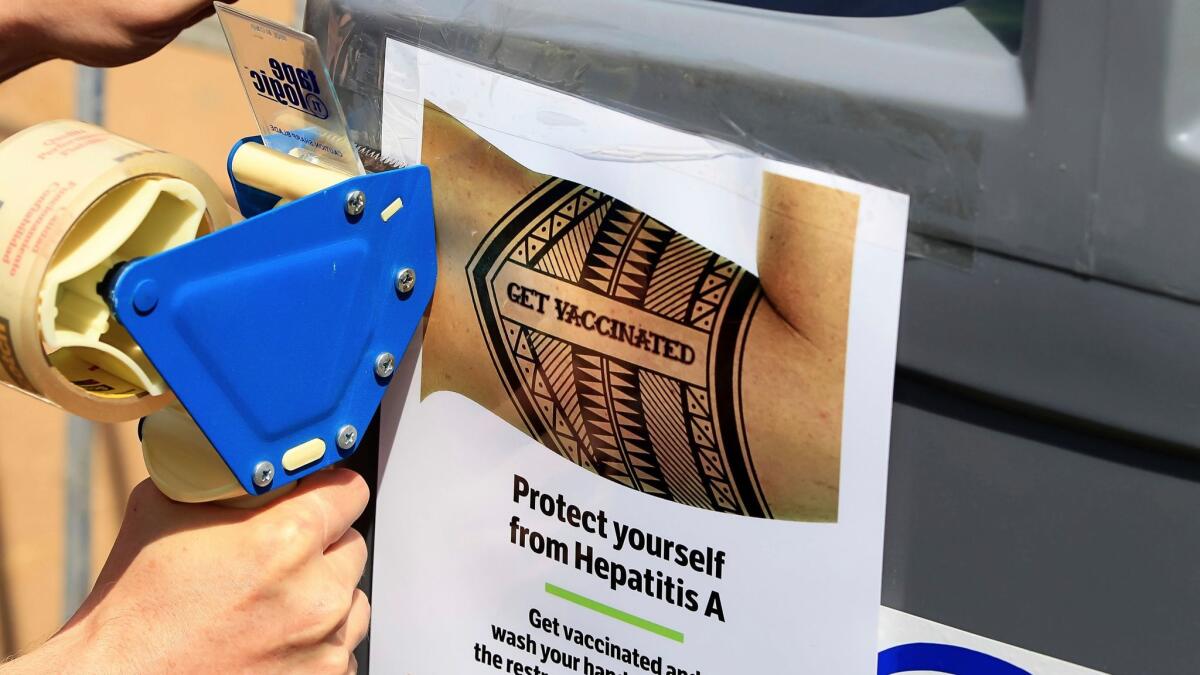Long before deadly hepatitis A outbreak, San Diego was warned about lack of bathrooms

As San Diego officials scramble to stop a deadly hepatitis A outbreak linked to a lack of public restrooms downtown, they can’t say they weren’t warned.
A San Diego Union-Tribune review of public records found that since 2000, four grand jury reports emphasized the risks of human waste on city streets and a shortage of toilets available for use by the city’s growing homeless population.
One such report, filed in 2010, explicitly warned that an outbreak of illness caused by such unsanitary conditions “could result in liability to the city.”
Each of the reports called on the city to either add more all-hours, publicly available restrooms or bolster its street-cleaning regimen to ensure the public would not be exposed to human waste.
Health officials say such exposure helped fuel San Diego’s growing outbreak, which has left 16 people dead and more than 300 hospitalized. Since November, San Diego has seen 444 hepatitis A cases — as many as the combined total reported by California, Texas and New York in all of 2015, the most recent year for which statewide data are available.
This month, San Diego undertook grand jury-recommended steps in earnest — new bathrooms and street cleaning — after the hepatitis A outbreak garnered international attention. Adding two new restrooms brought downtown San Diego’s total to 21 public facilities.
The 19-member grand jury is a civil watchdog panel that investigates aspects of local government and citizen complaints. It does not handle criminal investigations.
City responses to two past grand jury reports, filed in 2005 and 2015, both cited security concerns and budget constraints among the hurdles of building new restrooms. New toilets, officials said, can be a magnet for criminal activity. They estimated the cost to install restrooms at $250,000, with annual operating estimates ranging from $65,000 to $400,000.
In 2005, the grand jury made a recommendation that the city “provide more public restrooms in the downtown area.”
The city responded, “The recommendation will not be implemented at this time due to the financial challenges of the city. The city does not have the resources to execute a project of this magnitude.”
Ronne Froman, city manager at the time, told grand jurors that corporate sponsorships were explored, but “corporations interested in spending these types of dollars with the city are not keen on the idea of associating their brand identity with toilets.”
Signage recommended by grand jurors to make restrooms more accessible also was rejected. Froman said advertising public toilets could not be done without amending city rules limiting signs placed in the public realm.
DeHaven writes for San Diego Union-Tribune.
ALSO
Health officials declare hepatitis A outbreak in L.A. County
Costa Mesa considers adding ‘spartan’ restrooms to deal with growing homeless issues
Lancaster street vendor may have exposed consumers to hepatitis A
To justify a 35% rate hike, Anthem expects Californians to use a lot more drugs next year
More to Read
Start your day right
Sign up for Essential California for news, features and recommendations from the L.A. Times and beyond in your inbox six days a week.
You may occasionally receive promotional content from the Los Angeles Times.






